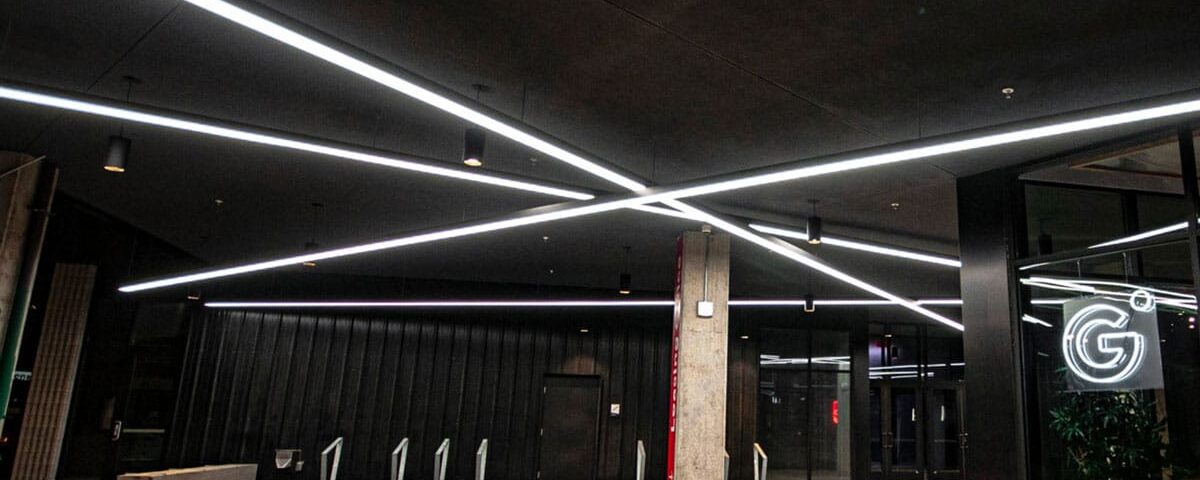What is Linear Lighting?
Simply put, linear lighting comprises a single or collection of long, thin light fixtures. The shape and size of today’s linear fixtures resulted from fluorescent lighting tubes that became a popular new light source over seventy years ago. Most linear light fixtures utilize light-emitting diodes (LEDs) instead of fluorescent tubes.
Linear lighting fixtures are versatile choices for lighting designers, architects, and homeowners. Mounting options that include surface, suspended, and recessed, on walls, ceiling, or virtually any surface in a structure make linear lighting a practical but also creative component of a lighting system.
The history of linear lighting
The history of the linear lighting fixture can be traced back to the early 1900s when fluorescent lamps were first invented. Fluorescent lamps were a significant improvement over incandescent lamps, as they were more efficient and produced less heat. The long, narrow shape of the fluorescent tube gave rise to the linear light fixture.
In the 1950s, linear lighting became a popular fixture choice in many applications, including offices, schools, libraries, warehouses, retail and healthcare facilities. This popularity was primarily due to the development of new fluorescent lamps that were more efficient and longer lasting. Linear fluorescent lighting was also becoming more affordable, making it a more attractive option for businesses.
In the 1970s, linear fluorescent lighting began to make its way into homes. This move into residential settings was partly due to the increasing popularity of open floor plans, which required more flexible lighting solutions. Linear fluorescent lighting was also considered a more energy-efficient alternative to incandescent lighting.
In the 1990s, LEDs were recognized as the future of lighting. Lamps designed with LEDs were notably more efficient than fluorescent lamps, much longer lasting, and produced a more natural light quality. This efficiency and light quality made them ideal for use in linear lighting fixtures, and LED linear lighting quickly replaced fluorescent linear lighting in many applications.
As the new century started, advancements in LED technology, including a broad light temperature range and RGB color options, further advanced the design creativity for linear lighting. Linear LED lighting is commonly used in residential, commercial, and industrial facilities today.
Benefits of Linear Lighting Systems
Linear lighting can be practical or fanciful, and it can also be subtle or striking. Linear fixtures are utilized as single standalone luminaires, long straight rows of adjoined fixtures, or geometric shapes formed by numerous luminaires. Linear fixtures are an essential component of complex or straightforward lighting designs.
There are many advantages to consider when including linear fixtures in a lighting system. Bright, evenly distributed light in commercial spaces can be attained with linear lighting, just as architectural features can be accentuated to create a memorable space. Linear lighting designs can also utilize long runs of fixtures to emphasize the size or shape of an area or be installed vertically on walls to create a focal point for the room or hallway. Cove lighting and task lighting are another opportunity to install linear fixtures. The addition of control devices, color options, and flexible light temperature assist with creating moods and atmospheres.

